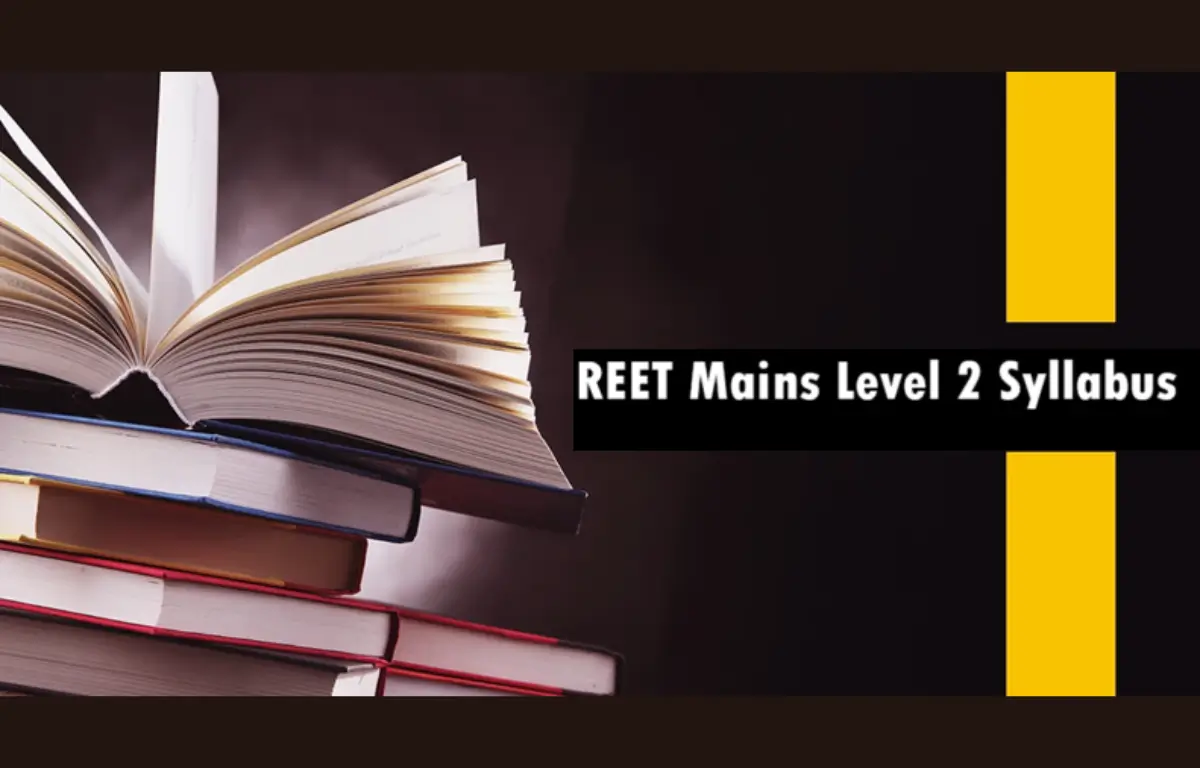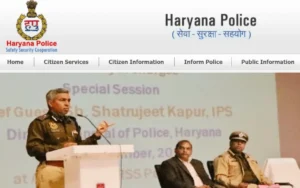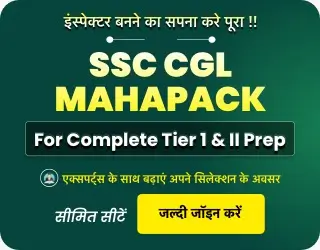REET Mains Level 2 Syllabus 2026 includes various subjects like Geography of Rajasthan, History & Culture, Educational Psychology & Policies, and other subjects. RSSB is responsible for conducting the REET Mains Level 2 Examination to recruit eligible candidates for Level 2/ Upper Primary Teacher (Classes 6-8) teachers in Rajasthan government schools. Knowing the REET Mains Level 2 Syllabus in detail boosts your chances of success in the exam.
REET Mains Level 2 Syllabus & Exam Pattern 2026
As announced by Rajasthan Staff Selection Board (RSSB), REET Mains Level 2 exam is scheduled from 17th to 20th January 2026, the candidates must go through the syllabus to know which section they have left with. Below we have discussed marking scheme, exam pattern, and other details.
| REET Mains Level 2 Syllabus & Exam Pattern 2026- Overview | |
| Conducting Body | Board of Secondary Education, Rajasthan (BSER) |
| Exam Name | Level 2/ Upper Primary Teacher (Classes 6-8) |
| Vacancy | 2123 |
| REET Mains Exam Date 2025-26 | 17th to 20th January 2026 |
| Total Questions | 150 |
| Total Marks | 300 |
| Total Time | 2 hours 30 minutes |
| Marking Scheme | Correct Answer: 2 marks awarded Incorrect Answer: 1/3 of the marks subtracted |
| Official website | www.rajeduboard.rajasthan.gov.in |
REET Mains Level 2 Selection Process 2026
Candidates must first qualify for the REET Exam to be considered to apply online for the REET Mains exam. This stage has been completed, now the qualified candidates are eligible to appear for the Written Exam. Candidates who successfully clear the written exam will be called the final stage, which is the Document Verification.
REET Mains Exam Pattern 2026
There will be 150 questions for 300 marks; candidates must complete the exam in 2 hours and 30 minutes. For every correct answer, 2 marks will be added, while for every incorrect attempt, 1/3 of the marks will be deducted.
| Subjects | Total Questions | Total Marks | Duration |
| Rajasthan Geography, History & Culture | 40 | 80 | 150 minutes |
| General Knowledge of Rajasthan | 25 | 50 | |
| Educational Psychology & Policies | 25 | 50 | |
| Hindi English Sanskrit Sindhi Punjabi Social Studies Mathematics & Science |
60 | 120 | |
| Total | 150 | 300 |
REET Mains Syllabus 2026
To prepare well, the subject-wise syllabus for REET Mains Level 2 has been shared below, it helps candidates understand what subjects and topics will be asked in the examination. By knowing the full syllabus, candidates can classify the subjects based on their strengths and weaknesses.
REET Mains Level 2 Syllabus for Hindi
- मुहावरे और लोकोक्तियाँ
- शब्द शक्ति
- शब्दों के प्रकार – उत्पत्ति के आधार पर, निर्माण के आधार पर, अर्थ के आधार पर (पर्यायवाची, विलोम, समानार्थक, एकार्थक, वाक्यांश के लिए एक शब्द, समूहवाची शब्द आदि)
- वाक्य रचना, वचन, उपसर्ग और प्रत्यय के प्रकार एवं उदाहरण
- शब्द शुद्धि और वाक्य शुद्धि के प्रकार एवं उदाहरण
- वाक्य विचार – वाक्य के अंग, प्रकार, रूपांतरण आदि
- विलोम शब्द – प्रकार एवं प्रयोग
- अपठित गद्यांश पर आधारित प्रश्न एवं उससे संबंधित व्याकरण
- अपठित पद्यांश पर आधारित प्रश्न एवं उससे संबंधित व्याकरण
- व्युत्पन्न शब्दावली (संधि, समास, उपसर्ग, प्रत्यय आदि से निर्मित शब्द)
- हिंदी वर्णमाला का ज्ञान
- शब्द विचार (संज्ञा, सर्वनाम, विशेषण, क्रिया एवं अव्यय)
- रूपांतरित शब्द – लिंग, वचन, काल, कारक, पद तथा शब्दों का रूप परिवर्तन
REET Mains Level 2 Syllabus for English
- Synonyms and Antonyms
- Idioms and proverbs
- Phrasal verbs
- One word substitution
- Clauses Analysis
- Subject verb Agreement
- An acquaintance with literary terms
- Modal Auxiliaries
- Prepositions
- Unseen passage-Prose
- Unseen passage-Poetry
- Basic knowledge of English sounds and their Phonetic symbols
- Parts of speech
- Tenses
- Voice
- Narration
- Transformation
- Conditional Sentences
REET Mains Level 2 Syllabus for Social Studies
- World: Types of agriculture and major industrial countries.
- Indian Constitution: Process and features of constitutional development, Preamble, Fundamental Rights, Directive Principles of State Policy, and Fundamental Duties.
- Formation and Functions of Government: Legislature, Executive, and Judiciary.
- Local Governance: Rural and Urban; 73rd and 74th Constitutional Amendments.
- Indian Democratic Process and Women’s Representation
- Federal Structure of India: Centre-state relations.
- Indian Economic System: Sectors of the economic system, Indian economic system in the post-liberalization era, Privatization, Personalization,
- Globalization, World Trade Organization, Planning, and food security
- Climate and Weather: Modern concepts of climate, Different conditions of rainfall, Self-help groups
- Consumer Rights: Consumer and their rights
- Development of Indian Economy: National development, National income, Human development
- Agriculture and Irrigation in Rajasthan: Agricultural Crop Board, Public distribution system
- Ancient Indian Civilization and Culture: Indus Valley Civilization, Vedic Culture, Jainism and Buddhism, Mauryan and Gupta periods.
- Mauryan Economy: Political and administrative systems of the Mauryan economy. Arthashastra by Kautilya and inscriptions.
- Delhi Sultanate and Mughal Economy: Expansion of the Delhi Sultanate, the Mughal economy, and its relation with princely states, and administrative
- systems of the Sultanate and Mughal periods. Prithviraj Chauhan.
- Indian National Movement
- Geography: Movements, volcanoes, and earthquakes.
- World Map: Continents, structure, oceans, and map reading.
- Industrial Revolution: Renaissance, Reformation, and water-steam division.
- Major Forest Resources of the World: Forest regions and forest-based human life.
- Agriculture-based Industries of Rajasthan
REET Mains Level 2 Syllabus for Mathematics
- Ratio & Proportion, Profit & Loss, Simple Interest, Compound Interest, Time & Work, Time & Distance, Speed
Graphs and Charts - Symmetry and Patterns- Understanding of symmetry, most symmetrical figures, reflection, rotation, and multiple lines of symmetry
- Application and scope of symmetrical patterns (natural, artistic, geometrical like lines, angles, circles, polygons, etc.)
- Transformation of solid shapes- Folding and unfolding of 3D shapes like cube, cuboid, cone, cylinder, sphere, and visualisation of different views
- Statistics- Representation and interpretation of data (tabulation, bar graph, pie chart, etc.), use of mean, median, mode
- Numbers and Fractions: Types of numbers (natural, whole, integers, rational, real), and rules for number operations
- Factors and Multiples, HCF and LCM
- Algebra- Algebraic expressions, identities, simplification of algebraic expressions, BODMAS rule, linear equations, and factorisation
- Geometry- Plane and solid geometry, lines and angles
- Mensuration- Area and volume of various 2D and 3D shapes, practical applications of mensuration
- Data Handling- Tabulation of data, pictographs, bar graphs (simple and grouped), pie charts, central tendencies – mean, median, mode
- Probability- Basic concept and real-life applications
REET Mains Level 2 Syllabus for Science
- Environmental science- atmosphere, wind, water cycle, ozone layer, light pollution, human vision defects
- Sound
- Solar system – sun, stars, solar family – planets, satellites, meteors, constellations, galaxy
- Food- major nutrients, deficiency diseases
- Force and motion, laws of motion
- Fundamental Rights and Duties, Rule of Law, Fundamental Duties and the impact of resistance movements
- Logical reasoning, rules of calculus, sustainability, and environmental science concepts
- Pollution and protection, global warming, eco-sustainability
- Matter and its states, concept of molecule, physical quantities, structure of matter
- Properties, classification, and separation of substances
- Scientific processes and classification, observation, and inference
- Force, motion, and energy, Newton’s laws
- Sound and light, reflection, refraction, lens, mirror
- Magnetism and its uses
- Electricity- current, resistance, circuit
- Environmental Science- pollution, conservation, ecosystem, recycling
- Health and diseases- major nutrients in food and deficiency diseases
- Force and Motion- laws and types
- Concept of energy and its transformation
- Scientific principles and inventions
- Role of humans in the environment and importance of natural resources
- Scientists and their contributions to science
- Atomic structure
- Common diseases due to nutrient deficiency and preventive measures
- Work and energy, laws of motion
- Important science laws and their implications
- Scientific outlook and logical reasoning
- Discovery, invention, scientific method, and experimentation
- Light- reflection, refraction, laws of light
REET Mains Level 2 Syllabus PDF Download
Candidates preparing for the REET Mains Level 2 exam can download the detailed official syllabus PDF given below. This PDF contains all the important topics and subject-wise details that are part of the exam. Printing the PDF makes the REET Mains syllabus handy, which helps tracking what topics are covered for the examination



 Bihar Police Havildar Clerk Syllabus &am...
Bihar Police Havildar Clerk Syllabus &am...
 Haryana Police Constable Syllabus 2026 a...
Haryana Police Constable Syllabus 2026 a...
 OSSSC Excise Constable Syllabus 2026, Ch...
OSSSC Excise Constable Syllabus 2026, Ch...






